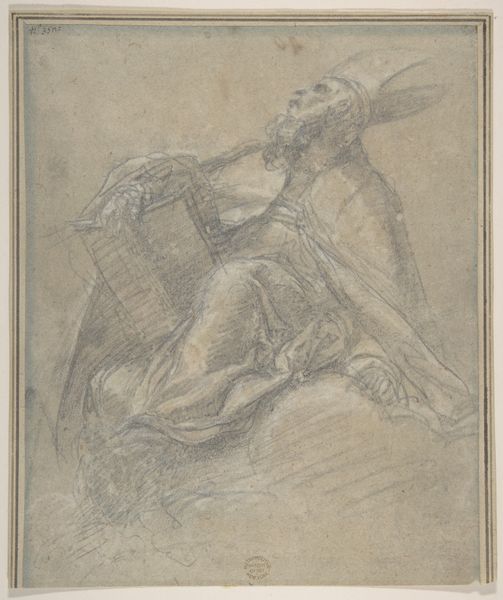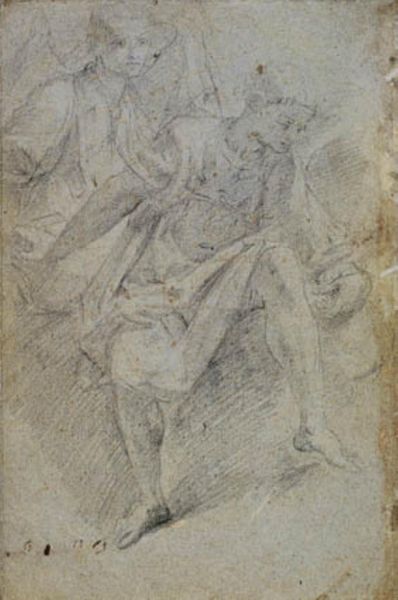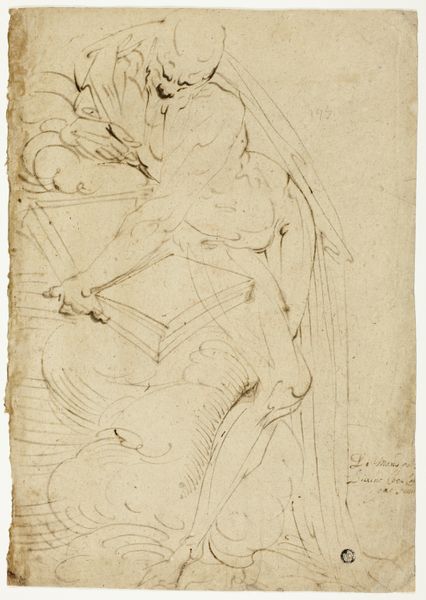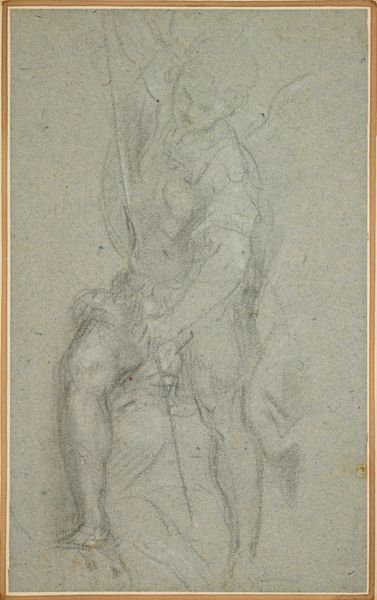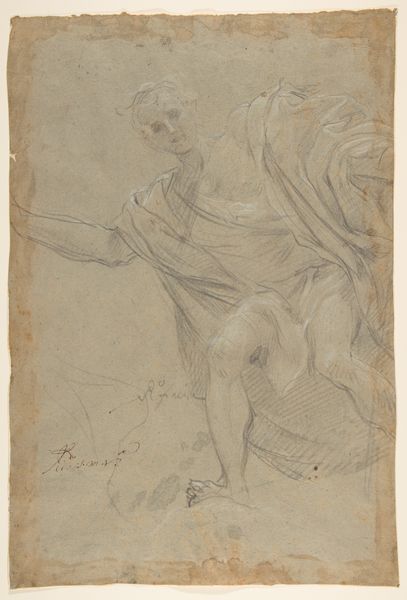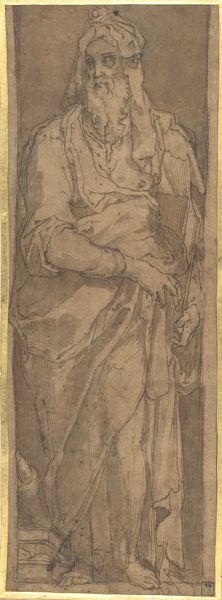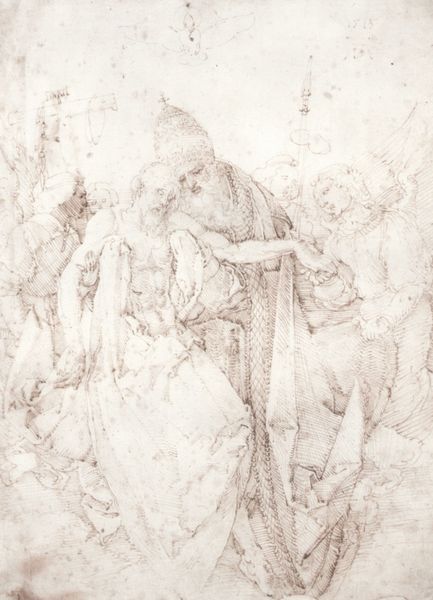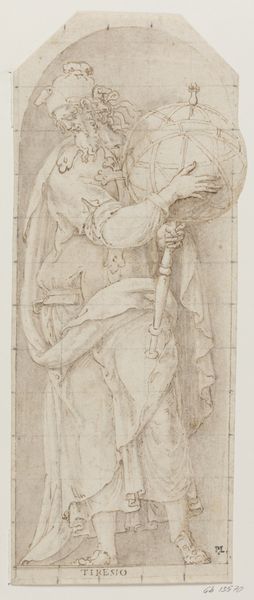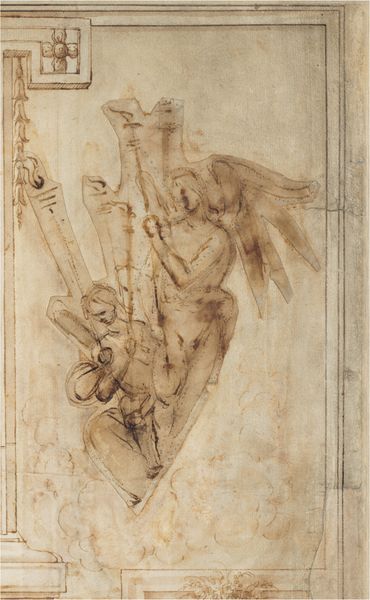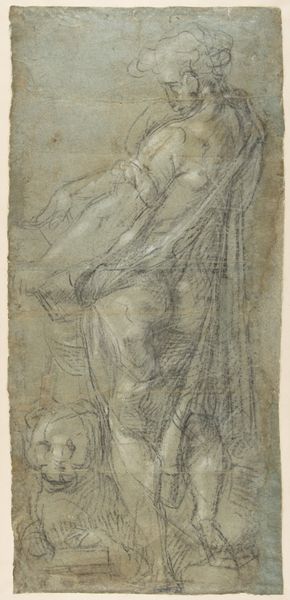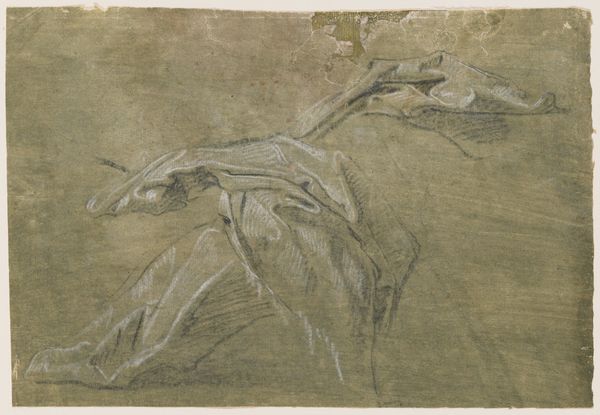
drawing, paper, pencil, charcoal
#
portrait
#
drawing
#
pencil sketch
#
charcoal drawing
#
paper
#
11_renaissance
#
pencil drawing
#
sketch
#
pencil
#
charcoal
Copyright: Public domain
Curator: Palma il Giovane, also known as Palma the Younger, sketched this "Seated Bishop Holding a Book," using primarily pencil and charcoal on paper. It looks like the image is a preparatory drawing, rather than a finished work. Editor: Immediately, I’m struck by how ephemeral it feels. The charcoal and pencil give it a lightness, almost as if the bishop is fading from view. Is this about the transience of power? Curator: Well, consider the role of sketching in Renaissance workshops. These weren't always meant for public display. They functioned as explorations of form, light, and composition, so the sketch may represent an intellectual exercise rather than a commentary on power. Editor: I see your point. But even as an exercise, it conveys a particular mood. The way the lines seem to drift and dissolve around the edges suggests uncertainty, perhaps even vulnerability. He seems so pensive with that large book resting on his knee. I wonder if the choice of such an open pose with all that flowing drapery also reveals aspects of identity tied to status or the expectations placed upon figures of power? Curator: The portrayal of religious figures like this bishop had political implications. Even if the sketch never became a completed painting, it was still viewed within a context deeply intertwined with politics and social standing. The way he holds the book shows its importance. The artist is possibly reminding the viewer about his subject’s commitment to church values and its teaching. Editor: Do you think it speaks to the contemporary tensions around institutional religion? Or the responsibility, even burden, of knowledge? The sketchy, unfinished quality perhaps mirrors the ongoing and ever-evolving nature of those discussions? Curator: That reading definitely brings in modern perspectives. From my point of view, this bishop, in his garments, symbolizes Renaissance ideals about faith and authority. Editor: I guess it demonstrates how art can be viewed through varied lenses—through historical documentation as you explained and from our lived experience and concerns in our modern moment. Curator: Absolutely! Hopefully, our discussion will prompt others to form their own ideas.
Comments
No comments
Be the first to comment and join the conversation on the ultimate creative platform.
